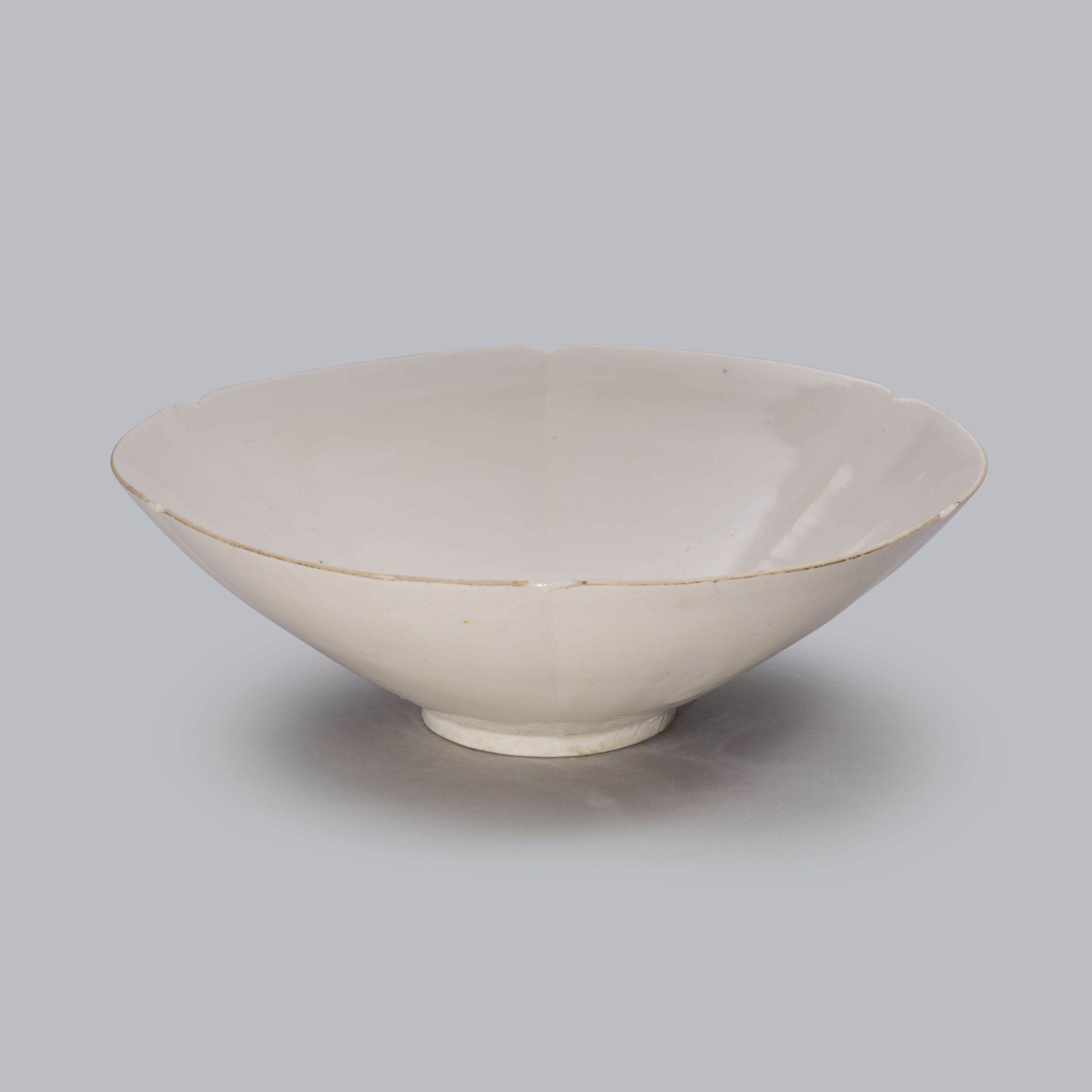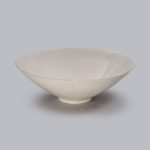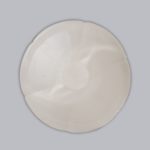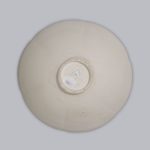
Bowl [Ch204]
Ding Ware, Quyang County, Hebei Province; Northern Song Dynasty, 11th century
Stoneware with white glaze (D. 21.9 cm)
Ding ware was made in Hebei Province in the north of China. It has a grey-white stoneware body, most often covered in an ivory-coloured glaze. By the 11th century, Ding ware enjoyed a high status. It features in the works of contemporary writers and was in use at the imperial court. Later Chinese connoisseurs counted Ding among the ‘Five Classic Wares’ of the Song dynasty, along with Ru, Jun, Guan and Ge wares.
While many examples of Ding ware have carved or moulded decoration, some were very plain. Ding ware appealed to the scholar bureaucrats of the Song dynasty, who promoted a restrained and elegant aesthetic. Pieces like this bowl were admired for the beauty of their form and the quality of their glaze. However, some contemporary sources indicate that Ding ware was not considered fine enough for use by the emperor himself, perhaps because of imperfections such as the rough rims and ‘teardrops’ formed by running glaze.
Exhibited: ‘The World in Monochromes’, Oriental Ceramic Society, SOAS, 2009, no. 100
Literature: R. Scott et al., The World in Monochromes (London, 2009), p. 50
Provenance: Christie’s, London, 9 June 1997, lot 43 (one of a pair); Carter Asian Art, 12 June 1997; Accepted in lieu of Inheritance tax by HM Government from the estate of Anthony du Boulay in 2024 and allocated to the Winchester College Treasury Museum
Location: Treasury, Gallery 2


